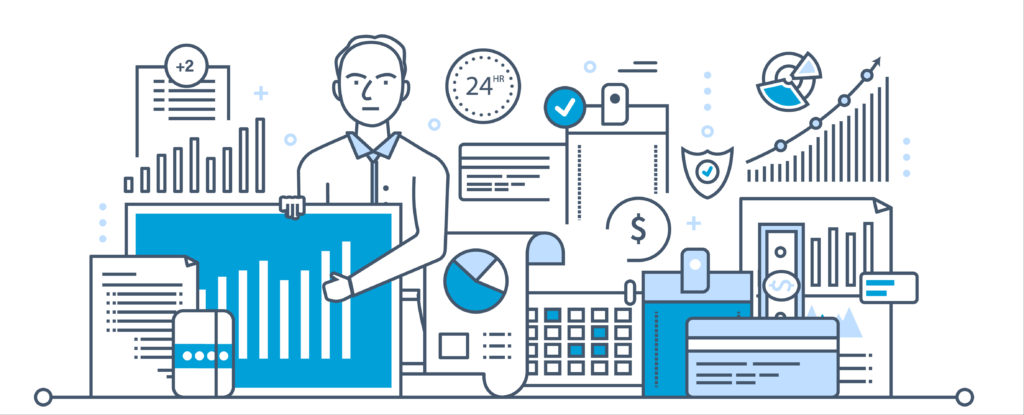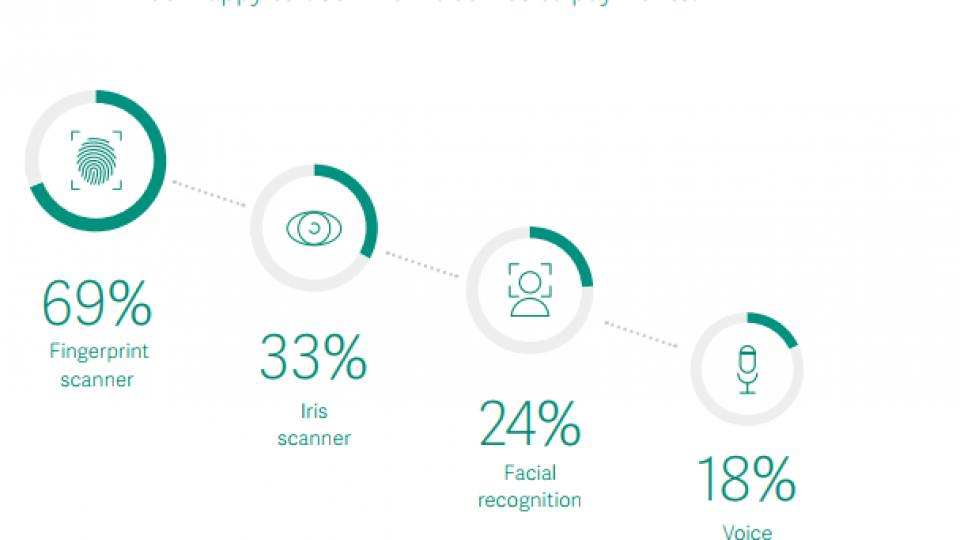
Distinguishing good strategies from bad ones can be challenging, especially when there are so many options available. We have selected the four best known and most effective ways to repay a loan on our debt calculator. In this guide, we look at a strategy called “Maximum Monthly Payable First”.
The issue of speeding up loan repayment
But first: What are the benefits of speeding up debt repayment? After all, you already have a payment plan with your lender that ensures that you repay your loan regularly on a monthly basis. You’ll likely repay even your credit card debts on a regular basis, albeit in small installments. It is true that you will thus get rid of the debt you have taken away – slowly but surely. The purpose of faster repayment is to save money on borrowing costs in the long run.
Most of the loans are so-called installment loans, in which you pay the same monthly installment for the entire term of the loan, as long as there are no changes in interest rates. This affects your loan in such a way that you mostly pay interest expenses at the beginning of the loan period. As you progress, an increasing portion of your installment is the actual repayment of the debt. In an installment loan, interest is calculated on the remaining debt on a monthly basis.
With this structure, a longer loan term means a more expensive loan due to your lender being able to calculate a higher amount of outstanding debt at your interest rate. Paying off the actual debt will take longer and you will have to pay more interest costs. By speeding up debt repayment, you can get rid of your loan faster, which means fewer interest calculations and a cheaper loan in general.
This is why you need a stable payment plan
Repaying the loan on a faster schedule saves obvious money. This is a matter of course, but there are other reasons to create a reliable payment plan. This should always be the first step at the stage when you have decided to make a conscious effort towards financial freedom. Our debt calculator will help you with this
1: You know your debt situation better
It is easy to let monthly loan tranches turn into completely subconscious transactions. We tend to accept that our debt is as it is. Many borrowers also believe they can do nothing about their debt situation. By creating a payment plan for yourself, you will learn to stay on the map with respect to your debt. That’s when you’ll also find that there’s a lot you can do about it.
2: You create a clear body for yourself
Repaying the loan has a lot in common with diet and exercise. Without a clear plan, it is easy to go back to old ways. If you plan to stay motivated throughout the repayment process, you need clear structures – preferably as automated as possible. With the payment plan, you get to pay regular monthly installments in addition to the installments. This means you don’t have to think too much about the extra money in your budget. Instead, you can just transfer them directly to your debt accounts.
3: Create a plan to fit your budget
The bank’s payment plan is built in accordance with the bank’s financing systems. In other words, it does not necessarily take into account your private budget. When you create your own payment plan, you also create a unique structure that fits your personal finances. Compared to a customized structure, the probability of success in debt repayment is significantly higher.

Different strategies for debt repayment
As already mentioned in the introduction, there are a number of different strategies for faster debt reduction. There is also a lot of variation in the usefulness of these, but there is a wide range of good methods available. When starting to repay a debt, it is essential to choose which strategy to use. It is crucial that you choose the strategy that is right for you.
In debt repayment, motivation is everything. This is why so many people are virtually ignoring their monthly installments instead of doing something about their debt costs. Working on loans requires a lot. You have to approach your personal finances in a whole new way and make sometimes unpleasant choices
The two best known strategies for debt repayment are the snowball method and the avalanche method You can find both in our debt calculator. In addition to these, there are two other strategies that can be helpful in paying off debt depending on your financial situation. When choosing a repayment strategy, it is important to consider both your own nature and your debt account.
Next, let’s look at the maximum monthly interest rate first strategy for repaying your debt and how it can help you.
Maximum monthly interest rate to be paid as a loan repayment strategy
The highest monthly interest rate payable first in a nutshell
When your debt repayment strategy is with the highest monthly interest rate first, you organize your debt account according to which loan incurs the most interest costs for you per month. This strategy differs from the avalanche method, where you focus on each loan interest rate. When you first pay the highest monthly interest rate, you are instead working on the monthly interest rates you pay each month.
The advantage of this strategy is that you get rid of your loans according to
1) What has the biggest impact on your monthly budget
2) where the most interest expenses arise.
By focusing on interest expenses this way, you will increase your monthly actual debt repayment budget faster. Since most of both secured and unsecured loans are installment loans, you pay the most interest expense at the beginning of the loan period. When you repay the loan that costs you the most every month, you get rid of your actual debt faster. This means that the creditor calculates a smaller loan amount each month in the interest calculation and the loan as a whole is more favorable.
Unsecured loans and maximum monthly interest payable first
Unsecured loans have a high interest rate relative to the loan amount. In other words, you get significantly less money for your money on unsecured loans compared to secured loans. The interest rate on a mortgage can be 2–4%, while a personal, unsecured loan can cost 13–30% or even more. Keep in mind, however, that the maximum monthly interest rate first strategy is not about the interest rate, but the interest item to be paid to put your debt account in order.
Let’s take an example here. Juho has three unsecured loans to pay. He has credit card debt on his credit card as well as two unsecured loans, one from the purchase of a new television and the other from a slightly larger kitchen renovation. All three loans are structured as installment loans, so the share of interest in the monthly installments will decrease during Juho’s loan period.
Credit Card debt
Amount: EUR 3 000
Loan length: 3 years
Loan interest rate: 25.6%
Monthly payment: 116 EUR
Interest to be paid: EUR 58 at the beginning (1st installment) and EUR 2 at the end (36th installment)
Unsecured loan 1
Amount: EUR 4 500
Loan length: 5 years
Interest payable: 18.4%
Monthly payment: 112 EUR
Interest to be paid: EUR 64 at the beginning (1st installment) and EUR 1.5 at the end (60th installment)
Unsecured loan 2
Amount: EUR 22 500
Loan length: 8 years
Loan interest rate: 13.8%
Monthly payment: 378 EUR
Interest to be paid: EUR 244 at the beginning (1st installment) and EUR 4 at the end (96th installment)
As can be seen from this example of Juho, large unsecured loans have the most expensive interest costs, even though this loan has the lowest interest rate. The reasons for this are the large loan amount and the longer loan period compared to other loans.
At the highest monthly interest rate payable, Juho must start paying on the second unsecured loan and then move on to the first unsecured loan. Finally, he pays off his credit card debt. However, it is possible that he will be able to get rid of both of the smaller debt accounts before repaying the large unsecured loan.
Secured loans and maximum monthly interest payable first
Mortgages are, for example, mortgages, car loans or other loans in which the bank mortgages the property for which you need a loan. Because this guarantees less risk for the lender, interest costs are more affordable than for unsecured loans. However, the example above shows that both the length of the loan period and the amount of the loan are both important factors in the actual interest expense of the loan. This also applies to secured loans.
In addition to his unsecured loan, Juho also pays a mortgage. This is an installment loan, just like unsecured loans. His expenses look like this:
Mortgage
Amount: EUR 150 000
Loan length: 25 years
Loan interest rate: 2.64%
Monthly payment: 681 EUR
Interest to be paid: EUR 325 at the beginning (1st installment) and EUR 1.5 at the end (300th installment)
Although the interest rate is only a fraction of the unsecured loan, Drink pays almost as much interest expense on his mortgage as on the unsecured loan. This is because the loan amount is large and the loan period is long. The bank is able to calculate the interest rate on the remaining loan amount significantly more times. The result is a higher interest cost on the mortgage.
If you included this mortgage in the example above, Juho would have started with a mortgage loan first and then a large unsecured loan, gradually moving to smaller unsecured loans and eventually to his credit card debt. In this sense, the highest monthly interest rate payable is a useful debt repayment strategy from a financial standpoint. However, before deployment, you need to make sure it is right for you.

Who is the highest monthly interest rate first strategy?
In an approach such as a strategy to pay the highest monthly interest rate, the challenge is that repayment starts with the largest loans. In financial terms, it is smart to pay off the loans that incur the most costs first. As we have seen before, this means that more money will be left to repay your actual debt, in addition to which the total cost of the loan will decrease in the long run.
In terms of motivation, however, this approach is tougher. A repayment plan that includes large loans such as a mortgage and larger unsecured loans is inevitably a longer project. This means that over time, you will have to make a lot of difficult decisions. Motivation is the main reason why so many repayment strategies are designed to start with smaller debt accounts.
This gives a sense of accomplishment, which in turn adds a kick to the repayment of subsequent, larger loan tranches. When you first pay the maximum monthly interest rate, you need to make sure that you are able to maintain your motivation throughout the repayment period. This method is best suited for individuals who are motivated by long-term savings and who are not bothered to cut monthly expenses for longer.
Maximum monthly interest rate payable first: Benefits
1: Reorganize high-budget purchases
By choosing this repayment strategy, you can reorganize your larger budget purchases over the long term. This has a big financial impact on your daily life and in addition, it makes saving for your dreams easier – or simply makes life more comfortable. Try to stick to your usual number of months even after you get rid of your debts, whether it’s saving or spending.
2: You save money in the long run
Long-term interest expenses are the largest expense item arising from a loan. Whether you pay small unsecured loans at a high interest rate or a large mortgage at a low interest rate, the interest rate is always the biggest expense. First, by choosing the highest monthly interest rate, your repayment strategy focuses on core interest rates. While speeding up debt repayment is challenging, you will save a lot of money in the long run by using this method.
3: You get one clear focus
First, choosing a repayment strategy that focuses on the largest debt accounts guarantees a highly committed repayment process. This is because most borrowers get rid of smaller loans almost automatically before they have completed the payment of their first debt. For many people, a precise focus maintains motivation evenly throughout the payment plan.

Maximum monthly interest rate payable first: Disadvantages
1: Paying off large loans first is laborious
The downside to this coin is that starting to repay a loan can be laborious when you start out of your biggest debt. In this situation, the feeling easily arises that getting rid of a loan is a melted impossibility. Remember that motivation plays an extremely important role if you want to pay off your debt earlier than planned. Therefore, you need to be sure that starting with large loans, such as a mortgage and a large unsecured loan, feels like a good idea.
2: You don’t have to do anything in front of expensive payday loans
When you pay the maximum monthly interest rate first, you do not take into account the interest rate on your loans . Of course, this is good for the economy in the long run, but it also means that expensive unsecured loans and credit card loans are left as they are. These debt accounts are expensive considering the amount of the loan relative to the interest rate. As such, a maximum monthly interest rate may not be the best strategy for small, expensive debt accounts.
Because loans are usually structured as installment loans, tracking variable interest rates can be difficult when the strategy is to pay the highest monthly interest rates first. This is especially true if you are repaying two larger debts with high interest costs in each. In the example above, Juho would have focused on a larger unsecured loan until it was repaid in full. However, it could have been more profitable for him to move on to the payment of the mortgage at a time when the interest costs of the unsecured loan had fallen low enough. When choosing this method, it is important to be aware that you may need to make changes to the order of your loan account during repayment.
The highest monthly interest rate payable first is a loan repayment strategy that is financially viable in the long run. When you first get rid of the largest extra items of expenditure, you release larger amounts of money per month to repay the actual debt. However, it is important to make sure that this strategy maintains your motivation throughout the payback. Get your payment plan up and running using our debt calculator today!




